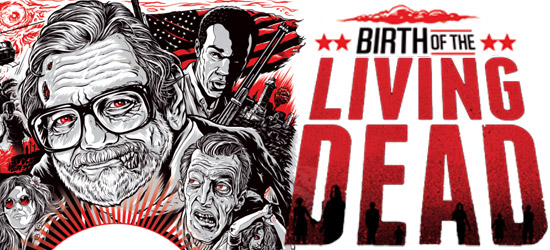 It’s no easy feat to create a new dedication to “Night of the Living Dead” that doesn’t feel rehashed or regurgitated from other documentaries. Rob Kuhn’s documentary had every chance to be just a summary of “Document of the Dead,” but thankfully is a fresh and very entertaining look at the horror film that changed the world. Director Kuhns doesn’t just explore how “Night of the Living Dead” changed horror films, but how it changed the pop culture and American landscape for fifty years after its release.
It’s no easy feat to create a new dedication to “Night of the Living Dead” that doesn’t feel rehashed or regurgitated from other documentaries. Rob Kuhn’s documentary had every chance to be just a summary of “Document of the Dead,” but thankfully is a fresh and very entertaining look at the horror film that changed the world. Director Kuhns doesn’t just explore how “Night of the Living Dead” changed horror films, but how it changed the pop culture and American landscape for fifty years after its release.
Whether many knew it or not, director George A. Romero’s horror film directly influenced many other very dark cynical polemics about humanity and society. Though, Romero does explain that the film was directly influenced by “I Am Legend,” he still insists most of the film’s most shocking twists and turns were incidental and based around the low budget. Surely, Ben did get shot in the end of the film, but it was written in to the script way before Duane Jones was cast. And Duane Jones had a very hard time delivering his violent scenes, because he was very much a sensitive individual. George Romero didn’t just break down all the cliches of the horror genre, but he also ruined the sanctity of the home by writing a terrifying story where the monsters break in to the home and intend to devour those residing inside.
Romero also broke down the Sidney Poitier mold of the dashing and charming savior, in favor of actor Jones who exuded an unconventionally average demeanor. Director Kuhn interviews many influential cultural figures including independent filmmaker Larry Fessenden, and Elvis Mitchell, many of whom discuss the often unorthodox narrative twists Romero took in favor of what was considered acceptable in the cultural climate of the sixties. This included children murdering their parents, nudity, and the twist ending. Romero opted for a more mixed and average cast of characters, all of whom fought for control of the farm house.
And though the director insists it was never a goal, the narrative often reflected underlying racial tension. The first half of the documentary focuses on the production of the film, with looks at how Romero was able to acquire actual police vehicles, and news helicopters for major shots, and how he assembled ad executives, producers, and news personalities to play zombies, and hunters. The second half is a more insightful delving in to how “Night of the Living Dead” held a mirror to society, and how it altered the face of cinema as a whole, setting the stage for many more cinematic masterpieces that would put American institutions on trial. “Birth of the Living Dead” is a short but sweet look at an iconic cinema masterpiece, and it’s definitely a treat for film fans of all kinds.
